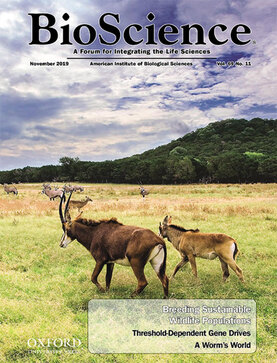Genomic Population Management
Genomic population management is important to the success of conservation breeding programs. C2S2 members like Smithsonian Conservation Biology Institute (SCBI) and African Lion Safari (ALS) use this technology to meet conservation breeding goals of creating and managing healthy, sustainable populations. The ultimate goal of utilizing genomics is to reintroduce animals to their natural habitats.
Genomics improves conservation breeding by:
Genomics improves conservation breeding by:
- Identifying historic lineages and estimating relatedness
- Providing details on ideal mating pairs (to avoid inbreeding and promote species robustness)
- Identifying genes that improve fitness (to ensure high fertility or resistance to disease)
- Selecting individuals most likely to adapt and survive the rigors of reintroduction to the wild
|
Genomic population management is a key component of C2S2’s efforts with each of our target species, including the cheetah, scimitar-horned oryx, and loggerhead shrike. In addition to ensuring genetically viable populations at member facilities, this revolutionary technology is being used in the field to examine animals in their natural habitats and will help answer academic questions relating to future conservation initiatives.
|
Bioscience Publication
|
C2S2’s Source Population Alliance was featured as the October 2019 cover story of BioScience. This article entitled “Breeding Centers, Private Ranches, and Genomics for Creating Sustainable Wildlife Populations,” was written by C2S2 founder and former Senior Scientist Emeritus at SCBI, Dr. David E. Wildt. It reflects the contributions of C2S2 Conservation Centers African Lion Safari, Austin Savanna, Fossil Rim Wildlife Center, Smithsonian Conservation Biology Institute (SCBI), White Oak Conservation, and The Wilds.
The study, a culmination of nearly five years’ work, demonstrates a viable new model that ensures genetic diversity and long-term species survival, helping reverse the trend in which many of the world’s wild ungulate populations are collapsing. The new model applies cutting-edge genomics to the Source Population Alliance – a collaboration between large breeding centers and privately-owned ranches that gives animals the necessary space to thrive – to prevent inbreeding, reduced fitness, and ultimately the disappearance of species. |
This novel and highly effective solution produces sustainable populations and improves herd management. This is achieved by estimating genetic diversity, inbreeding status, lineage integrity, ancestry, and kinship. To date, SCBI and partners have generated reference genomes and additional whole genome resources for the sable antelope, dama gazelle, and scimitar-horned oryx.
Evolutionary Applications Publication

Comparison of genomic diversity and structure of sable antelope (Hippotragus niger) in zoos, conservation centers, and private ranches in North America.
As we enter the sixth mass extinction, many species that are no longer self-sustaining in their natural habitat will require ex situ management. Zoos have finite resources for ex situ management, and there is a need for holistic conservation programs between the public and private sector. Ex situ populations of sable antelope, Hippotragus niger, have existed in zoos and privately owned ranches in North America since the 1910s. Unknown founder representation and relatedness has made the genetic management of this species challenging within zoos, while populations on privately owned ranches are managed independently and retain minimal-to-no pedigree history. Consequences of such challenges include an increased risk of inbreeding and a loss of genetic diversity. Here, we developed and applied a customized targeted sequence capture panel based on 5,000 genomewide single-nucleotide polymorphisms to investigate the genomic diversity present in these uniquely managed populations. We genotyped 111 sable antelope: 23 from zoos, 43 from a single conservation center, and 45 from ranches.
We found significantly higher genetic diversity and significantly lower inbreeding in herds housed in zoos and conservation centers, when compared to those in privately owned ranches, likely due to genetic-based breeding recommendations implemented in the former populations. Genetic clustering was strong among all three populations, possibly as a result of genetic drift. We propose that the North American ex situ population of sable antelope would benefit from a metapopulation management system, to halt genetic drift, reduce the occurrence of inbreeding, and enable sustainable population sizes to be managed ex situ.
As we enter the sixth mass extinction, many species that are no longer self-sustaining in their natural habitat will require ex situ management. Zoos have finite resources for ex situ management, and there is a need for holistic conservation programs between the public and private sector. Ex situ populations of sable antelope, Hippotragus niger, have existed in zoos and privately owned ranches in North America since the 1910s. Unknown founder representation and relatedness has made the genetic management of this species challenging within zoos, while populations on privately owned ranches are managed independently and retain minimal-to-no pedigree history. Consequences of such challenges include an increased risk of inbreeding and a loss of genetic diversity. Here, we developed and applied a customized targeted sequence capture panel based on 5,000 genomewide single-nucleotide polymorphisms to investigate the genomic diversity present in these uniquely managed populations. We genotyped 111 sable antelope: 23 from zoos, 43 from a single conservation center, and 45 from ranches.
We found significantly higher genetic diversity and significantly lower inbreeding in herds housed in zoos and conservation centers, when compared to those in privately owned ranches, likely due to genetic-based breeding recommendations implemented in the former populations. Genetic clustering was strong among all three populations, possibly as a result of genetic drift. We propose that the North American ex situ population of sable antelope would benefit from a metapopulation management system, to halt genetic drift, reduce the occurrence of inbreeding, and enable sustainable population sizes to be managed ex situ.


